You may recall these lovely legs…

Well, I finally got around to clothing them in some fresh paint and starchy linens! Because I’m not an expert in upholstery (that’s the understatement of the year…), and since
Little Green Notebook recently posted a fantastic DIY upholstery series on her blog, I decided to simply give you a rundown of the whole process in photos with just a few comments, rather than trying to reinvent the wheel by explaining all the steps I went through. But, since I’ve decided that I need to be completely (sometimes painfully) honest about our DIY projects, I will be sure to drop a few tidbits that I learned along the way.
*If you plan to upholster a piece anytime soon, you
must check out these awesome tutorials by Little Green Notebook:
Step 1,
Step 2,
Step 3,
Step 4, and
Step 5.*
First, I snapped a bunch of “before” pictures—mainly so I would have a reference point in case I forgot something important in the middle of everything. Believe me—once you are in the throes of it all, you might feel slightly disoriented.
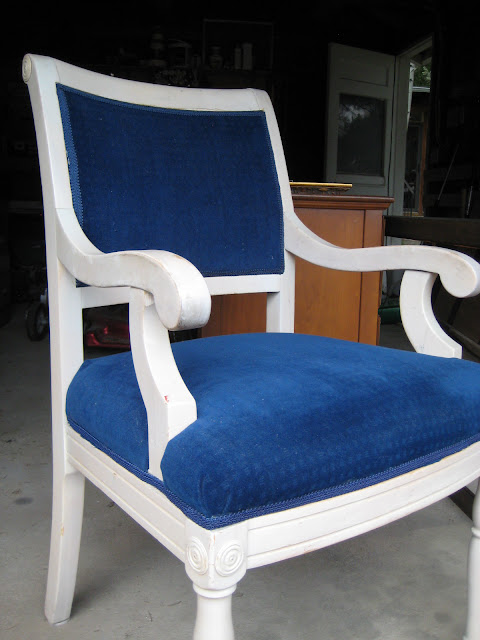
Then, I stripped her down to the bare bones. If you have never done this with a piece of furniture, I encourage you to give it a try. It’s amazing how often we sit on furniture but have no idea what lurks beneath the surface! Trust me—it will make for an interesting afternoon!





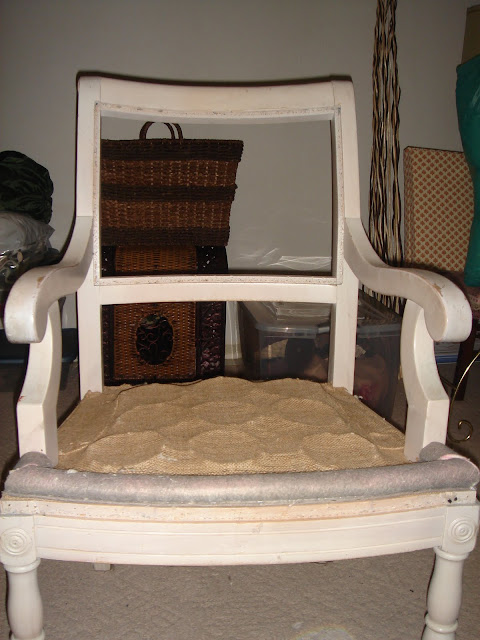
To keep things running smoothly, I labeled each piece of old upholstery with a sticky note reminding me which piece was for the back, front, etc.
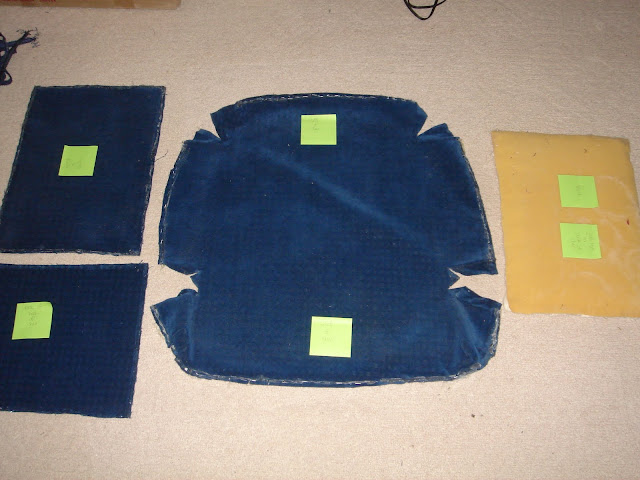
After freshening her up with several coats of paint and some poly (for a good protective measure), I came to the point of no return—cutting the fabric. Eek! Basically, I just traced the outline of the old upholstery and used that as my guide. And this is where I made my first big mistake… I thought since I was using a linen fabric with no obvious pattern that I didn’t need to think about the direction of the fabric. Wrong! All fabrics have a pattern—or at least a texture—so be sure you don’t let your brain wander during this phase! Thankfully, I had enough fabric left to cut another piece. Whew! It was nip and tuck, but in the end I averted disaster by the skin of my teeth (pardon the gross expression). Disaster being that my fabric on the seat of the chair would have been horizontal, while the back of the chair would have been vertical. I know—a harrowing afternoon at the Braham house.
Once my fabric was cut, I kind of stared at the chair not knowing how to proceed. I went back and read through the tutorial again, but I still felt a sort of paralysis. That’s when I started having that odd back and forth conversation in my head about putting on my big girl panties and such… Can you relate? So I pulled out the stapler and just started in. After my first few staples were in place, the project took on a life of its own and I just followed suit. I’ve done enough projects by now to know that I’m never going to be 100% comfortable trying my hand at something new; usually I have to just begin and everything falls into place after that.
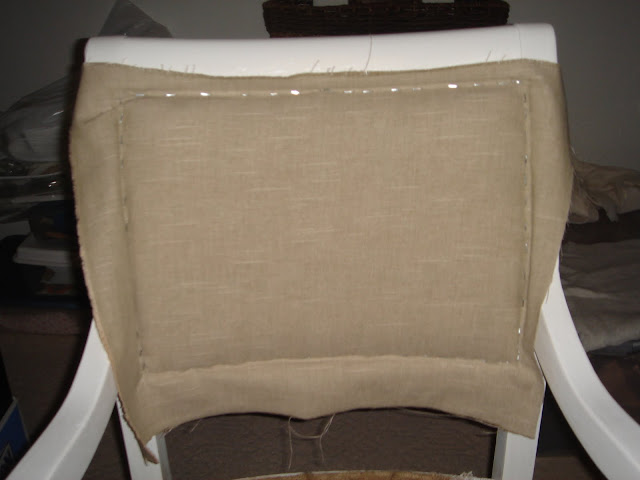
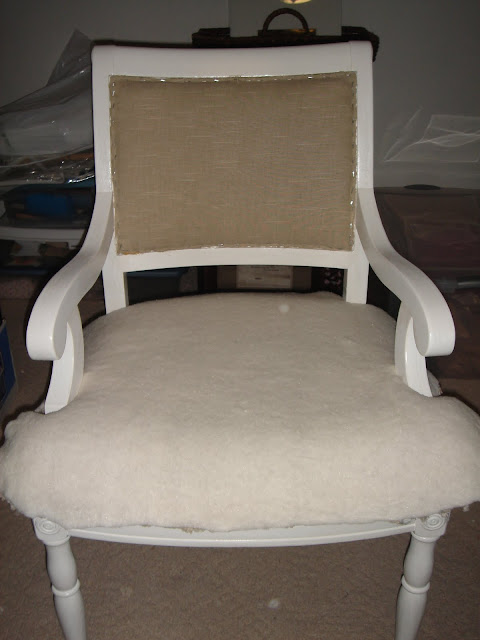

Once I stapled all of the fabric in place, I hot-glued trim around the unfinished edges for a clean look. Originally I wanted to use nail head trim, but it was pretty expensive, and I actually like the soft finish of the trim I ended up with.
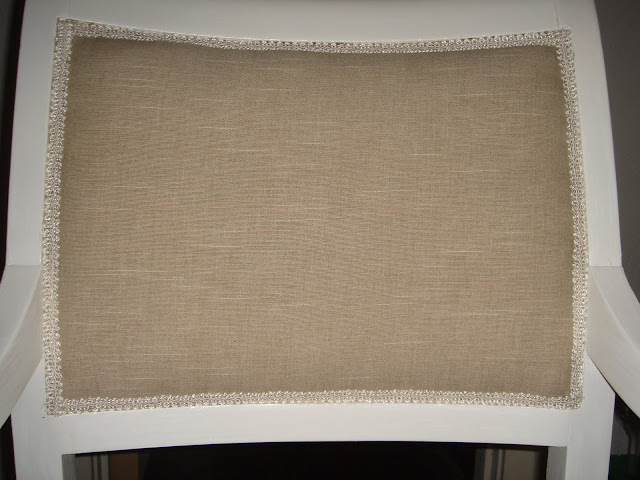
Now for the confessions… I had read in a tutorial that it’s possible to “damage the integrity of the wood” when stapling. Sadly, this happened to me while stapling to the back of the chair. There was a tiny lip that I was stapling into, and some of the wood splintered. Thankfully, it didn’t compromise the stability of the chair, and since it’s on the back it’s not noticeable. But still. It was unfortunate. I’m not exactly sure how to avoid this, but I imagine a nicer stapler and a tad more care might have helped.

Can you see it along the right edge?
While we're on the topic of stapling, I must admit that I used the wrong size staple at first. I thought maybe the wood was just really hard wood...until my husband gently informed me that my staple size was too big--hence the reason they weren't fully penetrating the wood. It's never just one trip to the hardware store, is it?
The second (or is this really the third?) confession is that I bought fabric and didn’t like it, so I ended up purchasing different fabric. Because I always try to do projects on the cheap, I was a little frustrated, but I decided to make pillows out of the original fabric (which will be another “first” for me)—and since the second fabric was on clearance, it wasn’t a huge deal.
After moving her into the kitchen, I realized that the ugly black fabric on her underside could be seen from certain angles. I ended up covering the bottom with extra fabric simply by tacking it around the edges.
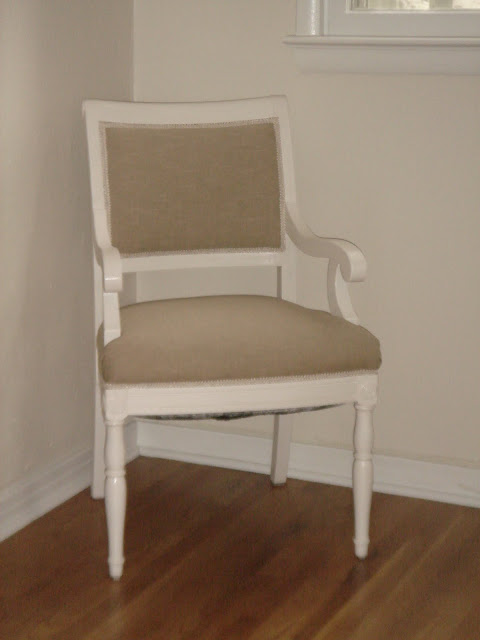

A last look…
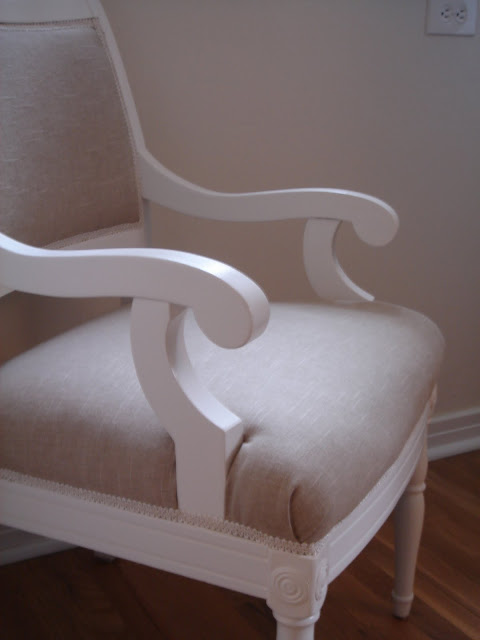
Overall, it was a good experience! You’ll definitely want to go into it with a large dose of common sense sprinkled with bits of humor and some courage, but this is a project that anyone can tackle. I mean, people, the internet has all the answers! Just kidding—kinda.
What about you guys? Have you upholstered anything? Did you freeze when you came to the point of no return? Do you know of any amazing tutorials floating around in cyberspace?